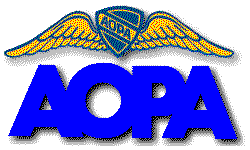Thu, Jul 29, 2010
Events Held In Conjunction With The Organization's Annual
Conventions
 From "Why?" to "How To," the AOPA and the NBAA will help
members make the most of their light general aviation aircraft as
business tools this fall at each group's annual convention.
Speaking at EAA's AirVenture, AOPA President and CEO Craig L.
Fuller and NBAA President and CEO Ed Bolen unveiled the six forums
that will be presented as the Light Business Airplane Conference at
both the NBAA Annual Meeting and Convention October 19-21 in
Atlanta and the AOPA Aviation Summit November 11-13 in Long Beach,
CA.
From "Why?" to "How To," the AOPA and the NBAA will help
members make the most of their light general aviation aircraft as
business tools this fall at each group's annual convention.
Speaking at EAA's AirVenture, AOPA President and CEO Craig L.
Fuller and NBAA President and CEO Ed Bolen unveiled the six forums
that will be presented as the Light Business Airplane Conference at
both the NBAA Annual Meeting and Convention October 19-21 in
Atlanta and the AOPA Aviation Summit November 11-13 in Long Beach,
CA.
"Business aviation involves the use of any general aviation
airplane for business, and our jointly hosted conference really
drives that point home," said NBAA's Bolen. "A large portion of the
businesses that use aviation are small companies, many of which use
smaller piston-powered aircraft. With this event, we can help to
ensure we're supporting their specific needs and addressing their
unique challenges."
"The six forums, all of which will be offered at each of our
gatherings, are designed specifically to help businesses that use
light GA aircraft get the most out of those aircraft," added
Fuller. "And because NBAA's convention is in the East this year and
AOPA's is in the West, we will collectively be able to reach many
more pilots, owners, and operators than either of us could
individually."
 The six courses include:
The six courses include:
- How to Use General Aviation for Business Purposes. The session
will introduce the range of options available and the proven
benefits when companies use general aviation for business.
- Tax Benefits of Aircraft Ownership. This course examines how to
write off expenses when using a personal airplane for business, and
the tax benefits that await if a person or business buys a new or
used airplane and places it in the business.
- Single Pilot: Safely will look at single-pilot operations.
Safety data shows that single pilot operations are riskier than
flights conducted with two-pilots. This forum will show how to
prepare for single-pilot flights in high-performance piston
aircraft and turbine aircraft to minimize risk. This session is
based upon AOPA Air Safety Foundation's "Single Pilot IFR, Turbine
Operations" course.
- Getting Reimbursed for Flights: What Do the FARs say? will
explain the applicable regulations and recent FAA legal
interpretations about accepting reimbursement for business or
personal flights and give a clear roadmap as to when a pilot can
accept reimbursement - from his or her company, or from other
passengers.
- An Insurance Panel will offer tips for the owner-flown market,
and address how to overcome challenges such as obtaining workers'
compensation coverage. Pilots who fly for business must ensure they
have properly covered the risks associated with aircraft ownership
& operations.
- Moving Up to a Turbine Aircraft answers questions about what a
business needs to know before moving up, and how to match needs
with the appropriate aircraft.
The majority of general aviation flight hours each year are for
flights made in support of business. The associations owe it to
their members, the leaders concluded, to help them get the most of
such an important business asset.
More News
Witness Reported The Airplane Was Flying Low And Was In A Left Bank When It Struck The Power Line Analysis: The pilot was on final approach to land when the airplane collided with >[...]
How To Get A Story On Aero-TV News/Feature Programming How do I submit a story idea or lead to Aero-TV? If you would like to submit a story idea or lead, please contact Jim Campbel>[...]
From 2012 (YouTube Edition): A Segment Of The Sport Aviation World That Truly Lives "Low And Slow" Pity the life of ANN's Chief videographer, Nathan Cremisino... shoot the most exc>[...]
Aero Linx: International Business Aviation Council (IBAC) IBAC promotes the growth of business aviation, benefiting all sectors of its industry and in all regions of the world. As >[...]
Execute Missed Approach Instructions issued to a pilot making an instrument approach which means continue inbound to the missed approach point and execute the missed approach proce>[...]
 NTSB Final Report: Cozy Cub
NTSB Final Report: Cozy Cub ANN FAQ: Contributing To Aero-TV
ANN FAQ: Contributing To Aero-TV Classic Aero-TV: Seated On The Edge Of Forever -- A PPC's Bird's Eye View
Classic Aero-TV: Seated On The Edge Of Forever -- A PPC's Bird's Eye View ANN's Daily Aero-Linx (04.29.25)
ANN's Daily Aero-Linx (04.29.25) ANN's Daily Aero-Term (04.29.25): Execute Missed Approach
ANN's Daily Aero-Term (04.29.25): Execute Missed Approach




